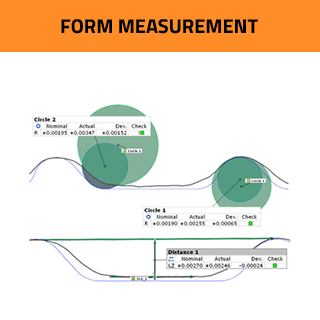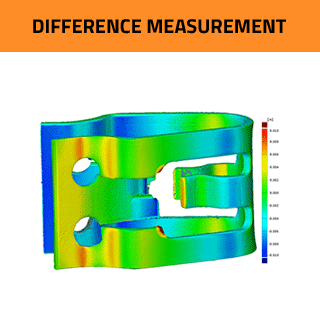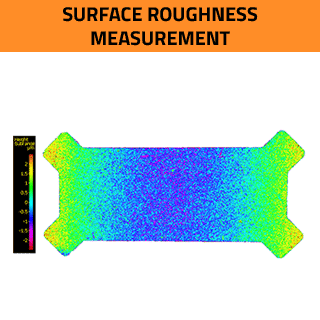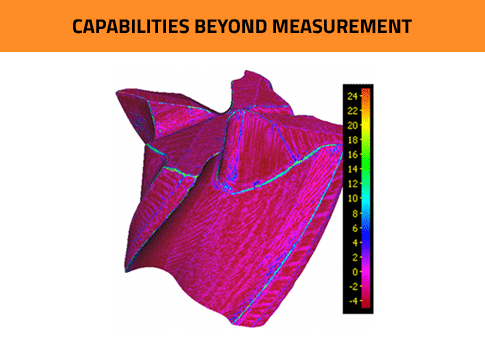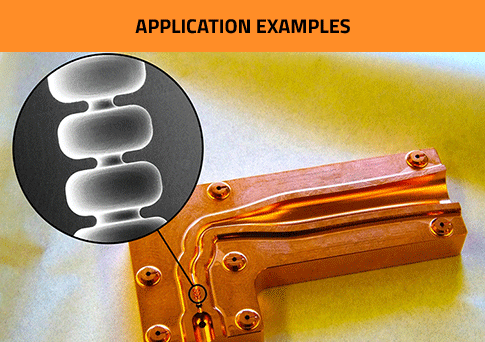| This section explains the main parameters of ISO 4287. Each parameter is classified according to primary profile (P), roughness profile (R), and waviness profile (W) in order to evaluate different aspects of the profile. (When the wavelengths of the waviness and primary profile components are compared, the surface roughness component is the asperity component of that which has the comparatively shorter wavelength.) |
| Peaks and valleys in the height direction |
| Arithmetical mean height (Ra, Pa, Wa) |
| Maximum height of profile (Rz, Pz, Wz) |
| Maximum profile peak height (Rp, Pp, Wp) |
| Maximum profile valley depth (Rv, Pv, Wv) |
| Mean height of profile elements (Rc, Pc, Wc) |
| Total height of profile (Rt, Pt, Wt) |
| Average amplitude in the height direction |
Root mean square deviation (Rq, Pq, Wq) |
| Average characteristics in the height direction |
| Skewness (Rsk, Psk, Wsk) |
| Kurtosis (Rku, Pku, Wku) |
| Horizontal direction |
Mean width of the profile elements (RSm, PSm, WSm) |
| Hybrid |
Root mean square slope (RΔq, PΔq, WΔq) |
| Areal material ratio curve and probability density function |
| Load length ratio (Rmr (c), Pmr (c), Wmr (c)) |
| Profile cut level difference (Rδc, Pδc, Wδc) |
| Relative load length ratio (Rmr, Pmr, Wmr) |
| Material ratio curve (BAC) |
| Probability density function (ADF) |
Mean height of profile elements
(Rc, Pc, Wc) |
Mean height of profile elements indicates the average value of the height of the curve element along the sampling length. Profile elements consist of a peak and a neighboring valley. The peaks (or valleys) that constitutes as an element have minimum height and length standards such that they will be treated as noise and considered a part of the preceding valley (or peak) if the height (or depth) is less than 10% of the maximum height or the length is less than 1% of the segment length. |
Total height of profile
(Rt, Pt, Wt) |
Total height of profile is the vertical distance between the maximum profile peak height and the maximum profile valley depth along the evaluation length. |
Root mean square deviation
(Rq, Pq, Wq) |
Root mean square deviation indicates the root mean square along the sampling length. For the roughness profile, Rq is referred to as the root-mean-square roughness, while Wq is referred to as root-mean-square waviness for the waviness profile. |
Skewness
(Rsk, Psk, Wsk) |
Skewness uses the cube of the root mean square deviation to display the dimensionless cube of the sampling length Z(x). |
Kurtosis
(Rku, Pku, Wku) |
Kurtosis uses the fourth power of the root mean square deviation to display the dimensionless fourth power of the sampling length Z(x). |
Mean width of the profile elements
(RSm, PSm, WSm) |
Mean width of the profile elements indicate the average value of the length of the profile element along the sampling length; Xsi is the length of a single profile element. The peaks (valley) that constitute elements have minimum height and length standards such that they will be treated as noise and considered a part of the preceding valley (peak) if the height (depth) is less than 10% of the maximum height or the length is less than 1% of the segment length. |
Root mean square slope
(RΔq, PΔq, WΔq) |
Root mean square slope indicates the root mean square of the local tilt dZ/dX along the sampling length. |
Load length ratio
(Rmr (c), Pmr (c), Wmr (c)) |
Load length ratio (Zmr (c)) is the ratio of the load length Mr (c) of profile curve elements to the evaluation length at cut level c (height in % or μm Mil). |
Profile cut level difference
(Rδc, Pδc, Wδc) |
Profile cut level difference (Zδc) shows the cut level c difference of the height trends that agree with the two given load length ratios. 2 load length ratios, Zmr1 and Zmr2 (load %) must be specified. |
Relative load length ratio
(Rmr, Pmr, Wmr) |
Relative load length ratio (Zmr) shows the load length ratio determined by a reference load length ratio (Zmr0) and the cut level difference (Zδc) from the cut level corresponding to the reference load length ratio. Reference load length ratio Zmr0 (% load) and cut level difference ZΔc (height in % or mm inch) must be specified. |
Material ratio curve
(BAC) |
Material ratio curve shows the curve of load length ratio determined as the cut level c function. Load length ratio is the ratio (%) obtained by dividing the total lengths of the length of curve data exceeding the cut level by the entire length (rn). |
Probability density function
(ADF) |
ADF displays the probability of height Z(x) obtained across the evaluation length. The derivative of the BAC data is also determined. These derivatives use the three-point formula shown below. When n=0 or N, calculations are carried out with BAC (-1) = 0.0 and BAC (N+1) = 100.0. Because the vertical range is the same as BAC, this is shown on the same graph. However, the graph is automatically adjusted so that the maximum value on the horizontal is 80%. |


